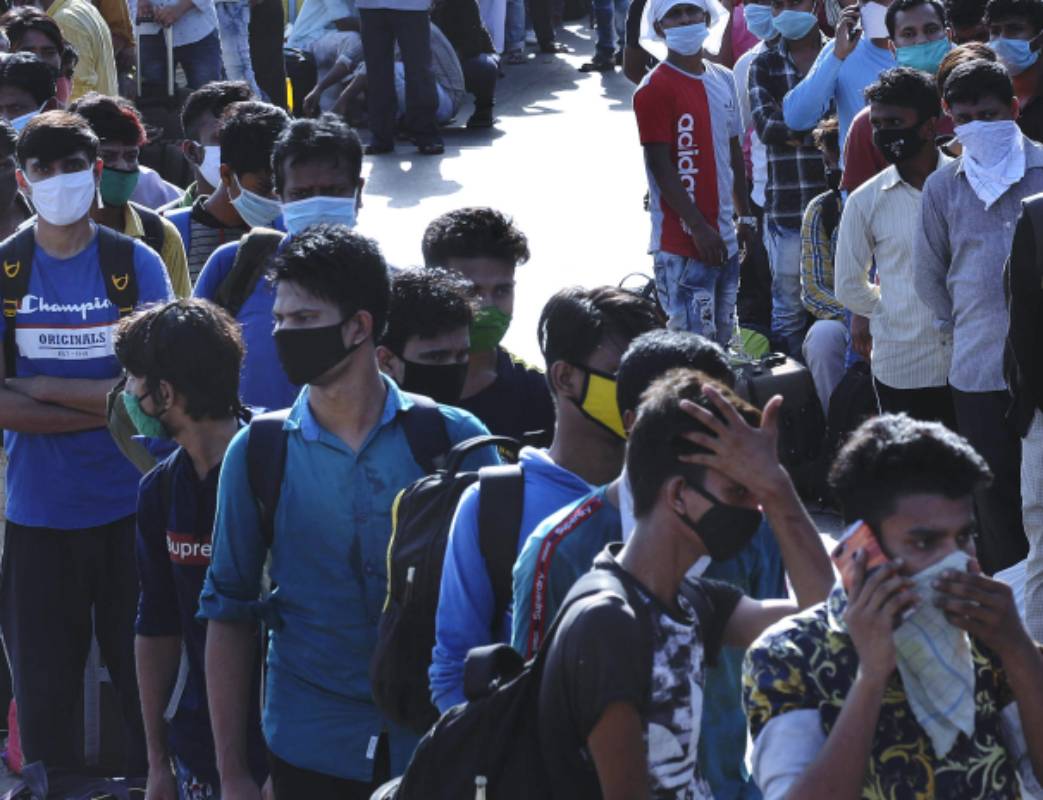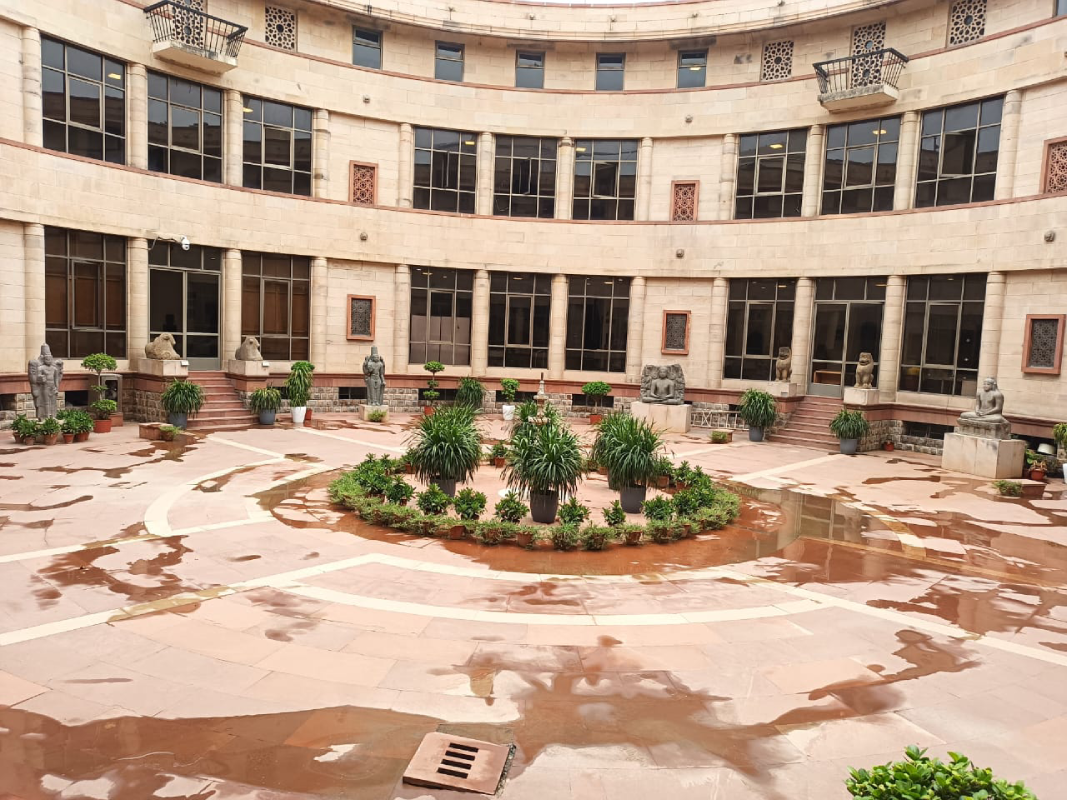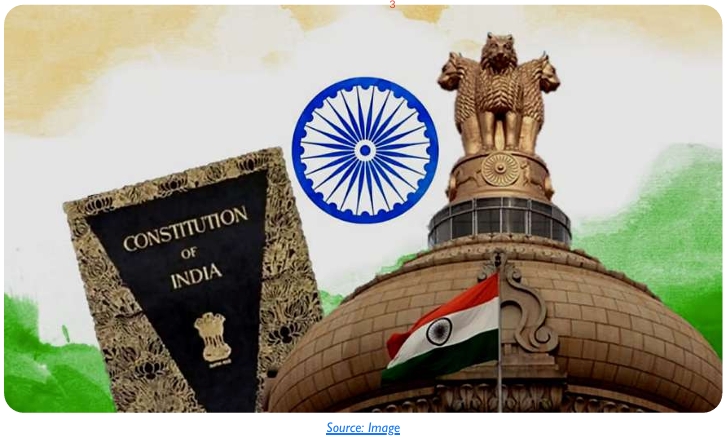The COVID-19 pandemic and the lockdown and other measures taken to counter it have delivered a severe blow to our economy. The sudden loss of livelihoods for many people has caused untold misery, especially for those working in the unorganised and informal sectors including the migrant workers. Many businesses had to face sudden closure and many of those which could attempt re-starting their operations are facing difficulties due to the losses incurred, the drying up of liquidity and the steep fall in demand. Business enterprises in certain sectors may not witness return to normalcy of operations for a long time to come.
The attention of policy makers, experts and leaders in various fields was first drawn, rightly, to controlling the spread of the pandemic; ensuring provision of medical facilities; administering the various measures under the lockdown and delivering relief in various forms to the needy segments of the population. While most of these would continue to be important, the focus should now shift to bringing back the economy to life. The priority now should be to ensure, to the extent possible, that people are able to carry out their economic activities in the same manner as were being carried out prior to the breaking out of the pandemic.
While this undoubtedly has to be one of the most important objectives, the impact of the pandemic has also provided scope for us to consider if we should aim for the same pattern of economic and social life as earlier. We are at a stage where we need to initiate some re-thinking of our social norms and behaviour patterns, our concerns and priorities, our economic and social sector policies as also our values. In our efforts to bring back economic and social life to normalcy, we should not lose sight of the need for the evolution of a vision for the society we would like to have post-COVID and to draw a roadmap toward the realisation of our vision. There is a need to try for a consensus on certain aspects of our society touching the spheres of economy, public health, education, governance as well as societal norms.
What are the major areas where some rethinking could be beneficial? Is it possible to revisit our some of our priorities in the economic and social sphere? What changes do we try to bring about in the practices followed by people so that we together move to a healthier society?
An enduring memory of the times of the pandemic would be the plight of the returning migrants. The images of families and groups of migrant workers walking back home in the blazing sun, carrying their meagre belongings with them, managing without food and without shelter would continue to remind us collectively of the unequal ways of our society. More distressing is the realisation about the absence of any livelihood opportunities staring at the migrants when they finally reach their destinations. Did we all these days continue to ignore the human aspect of development while we were busy rushing to achieve our goals of growth rates of the economy?
The Outcomes of Policies of the Past
Do we wish to continue with the same pattern of development which has led to this grossly unequal structure of our economy? Do we need to reverse some of the policies we have been following more or less consistently over the last few decades? To answer this question, we need to first look at the outcomes, intended or otherwise, of our economic policies over the last several decades which stand out as the most striking and enduring outcomes with high impact. It needs to be mentioned that these outcomes have been observed more or less consistently over the decades, notwithstanding the changes in governing dispensations, ideologies of the times or policy objectives professed to be adopted.
1.Unequal Development Between Regions
The unequal development is not just between states or larger regions such as the eastern region vis-à-vis southern and western regions. Even within states, we observe an absence of balanced development. No doubt, there has been all-round progress on many fronts in all regions of the country since independence. However, the disparities between regions widened due to the unequal pace of development. A vicious cycle of could be said to be observed where development in one region expanded the scope for further development in the same region with the underdeveloped regions lagging behind due to their limited development. Factors of production such as enterprise, labour and capital moved towards the developed areas due to the existing ecosystem.
2.Disparities Between Urban and Rural Areas as well as Between Occupations
In spite of all the talk of India living in villages, all the rhetoric of rural development etc., the fact is that urban areas have developed further since independence and the conditions in rural areas have worsened. No doubt, infrastructure may have improved in rural areas along with facilities for health, education etc. as compared to the situation a few decades ago. However, the neglect of rural areas led to absence of opportunities for livelihoods, advancement of education, personal growth etc. which sapped the rural areas of their vitality. Certain occupations gained in prominence and earning potential. Similarly, employment in the formal sector provided security and reasonable levels of remuneration while the informal sector, whether urban or rural, remained uncared for without security of work, adequacy of remuneration or acceptable level of working conditions.
3.Under-Utilisation of the Countrywide Potential of Agriculture
The country took a great leap forward in food security during the Green Revolution by adopting high yielding varieties, promoting irrigation and spreading the use of chemical fertilisers as well as pesticides. However, the success of these measures was somehow restricted to a few regions which resulted in furthering the skewed development between regions. Moreover, the limitations and adverse impact of this approach is being felt in the recent times with worsening ground water levels, effects of chemical fertilisers on soil resurgence and the health hazards due to increasing use of pesticides. While these concerns need to be addressed, there is an urgent need to revive agriculture as a viable occupation. The approach of successive governments has been to provide subsidies, free or cheap water and energy, provide interest subvention and frequent loan waivers and other forms of support. The sector has been starved of the benefits of what it needs most – investment of capital, comprehensive policy reforms and empowerment of human capital. The most ambitious set of policy reforms ever taken in 1991-92 and later years ignored the needs of the agricultural sector. We partly opened up the sector to international competition and made our policies compliant with WTO norms without first energising the sector and unshackling the various restrictions by introducing domestic reforms. The only comprehensive set of policy measures taken were perhaps during the Green Revolution in late sixties after which the sector has not seen much significant policy initiatives other than granting subsidies. The irony is that for decades all governments and political parties have been proclaiming their commitment for the kisan and the rural vote is said to be a major vote bank!
4.Gradual Erosion in the Status of Manufacturing as Provider of Employment
There was a period when it was thought that manufacturing is the answer to the problem of unemployment and to the development of a region. Large industries were promoted in the public sector including in relatively underdeveloped areas. For the private sector, however, in the initial years there were restrictions on growth due to licensing and various other measures of control. Over the years, manufacturing lost its potential to be the engine of development for various reasons such as excessive government control, restrictive laws, protection to trade unions, difficulties in manufacturing for exports, malpractices by promoters etc. The liberalisation of 1991-92 should have given a boost to manufacturing. However, this was witnessed only in a few sectors and regions. There was no impetus for overall growth in manufacturing. In fact, in certain sectors such as textiles, we have witnessed a fall in our position amongst exporting countries with smaller and so called less developed countries taking over. Had manufacturing grown at a greater pace, it could have provided employment in large numbers and the growing demand for labour could have improved the lot of the workers to some extent.
5. Focus on Gross Domestic Product to the Neglect of Equality and Human Development
One of the major objectives of economic development, perhaps the most important one, has to be human development. We seem to have lost sight of this objective. Not just the policy discourse of government but also the talk by captains of business, stock exchange pundits, investors, analysts, media and other commentators seems to be focussed on the growth of Gross Domestic Product (GDP) to the exclusion of other measures of development including our rank in per capita income. There is no concern in policy corridors of the growing inequality in the economy. A matter of greater concern is the total neglect of indicators of human development. While taking pride over the ranking of our country in the biggest economies, there is total disregard of the low ranking of being the 139th country in Human Development Index. Though the focus on GDP is strictly not an outcome of the policies followed over the years, it is indicative of our preferences which have developed over the years and the neglect of public health and public education since the early days on the path of development.
6. A Result of all of the above – Creation of two Economies in the Society
The various policies pursued over the decades have resulted in a division in the society; in fact, in the creation of two economies – one more forward-looking, modernised, better integrated with the world, assuring a decent standard of living and provision of good education and health to its denizens and the other acting as a colony of service providers and workers for the first world with difficulties in accessing not just the amenities of modern urban life but basic rights such as education and health and decent livelihoods. One economy is characterised by relatively higher incomes, better purchasing power along with production and supply of high-value, high-margin goods and services. While the high value and high margins generates higher income, this in turn pushes up the demand for high value products with a rise in incomes of all those engaged in the production and marketing. However, the high margin which leads to this cycle is possible in the first place because of the existence of an economy of service providers and labourers who earn a low income and subsist on low value goods with sub-human standards of living.
The disparities between the two worlds are further accentuated by the better access the first world has to the global economy and the tradability of what they have on offer. The second world has limited access to the global market and the only way they can access it is through physical migration to the few countries which have demand for their services. This existence of two disparate economies could very well be termed as the central malady of the economic policies and values of our society. A combined impact of the policies which led to these outcomes is the need for a resident of Jaunpur in U.P. to migrate to Mumbai to drive an autorickshaw or for a villager from Odisha to travel to Surat to work in the textile unit. A system where a person has to travel a distance of over a thousand kilometres or more to offer his labour to produce goods and services, some of which would be directly or indirectly consumed back home in his state, is not just an irrational system; it is economically unsound, socially iniquitous and environmentally destructive.
The Path We Could Take
Post pandemic, the central question then is not whether the migrant workers would get their employment back or whether the developed states would get the much-needed services of the workers. The central question is whether we should revert back to the same model of development which has led to these iniquities and absurdities in development.
What are the possible policy responses to correct the imbalance least to some extent, if not fully? An attempt is made in the following sections to find some answers.
1. Primacy in the Immediate Term to Providing Livelihoods Opportunities Over Growth in GDP
In the modern capitalistic world (including the economies not considered to be capitalist but which adopt certain values of the capitalist modes of production), the primacy is to efficiency, productivity and return on capital. Provision of employment is not a primary objective, especially if it conflicts with profitability. The adoption of large industries over small and cottage industries advocated by Gandhian economics or the increasing automation in industry and services in the recent times are testimony to this priority to productivity goals. One of the arguments in support of this approach is that an overall improvement in productivity would lead to higher overall growth leading to higher output and employment.
Whatever the merits or demerits of this approach, the need of the hour is to urgently provide opportunities for livelihoods to those who have lost their work. The various measures to be taken for meeting this objective could include some measures which in normal times be seen as less efficient use of capital and other resources. To give an example, production in small manufacturing units is considered to be less efficient than that in large units which are supposed to enjoy economies of scale. Similarly, import substitution is considered an inefficient mode of production if we do not possess comparative advantage in the production of a commodity. While these prescriptions could be valid in normal times, we need to commence economic activities at the earliest even if some of the initiatives result in a less efficient use of resources to some extent.
2.Virtuous Cycle of Local/Regional Demand Catered to by Local/Regional Supply
The plight of the migrant workers would continue to be deplorable as long as the supply of their services exceeds the demand. The attempt should be to create demand for their services in their region or state, if not exactly in their district. Increased economic activity in the regions of the migrant workers would lead to higher demand for their services leading to higher incomes in the local economy. The starting of a virtuous cycle of demand for local products leading to higher incomes for local people has to be tried for. Once the economy of a region achieves a certain level of momentum, not many efforts are then needed to keep it moving except providing support in sorting out any problems which could have arisen. Some of the possible ways of achieving a virtuous cycle of this kind are indicated in the following suggestions.
3.Re-Energising Agriculture as a Provider of Livelihoods
It is an intriguing feature that the rich alluvial plains of northern and eastern India with abundant water resources in many areas have not seen a revival of agriculture even to the extent to which some of the relatively water deficient states in the southern and western regions have achieved. It is often repeatedly said that the next green revolution would be in the eastern region. Admittedly, there is also some improvement seen in the agricultural sector in these regions. However, the pace of change is tardy and inadequate to generate the needed outcome. Another often repeated statement is about Indian agriculture producing for exports. However, no concerted and planned effort seems to have been undertaken.
Much has been said about what needs to be done for Indian agriculture. It may be worthwhile to recapitulate some of the points especially from the point of view of reviving agriculture in the regions which are home to most of the migrants:
- Encourage sustainable agriculture by organic and climate resilient methods of farming
- Introduce diversity in produce especially millets, fruit and vegetables, pulses and oilseeds etc. and encourage shift from foodgrains by eliminating skewed preferences in the procurement prices whose existing pattern is a remnant of the days of food shortages experienced five decades ago
- Expose farmers to export markets and provide linkages so that they could produce as per the requirements of export markets in terms of kind of produce, quality etc.
- Encourage exports of agricultural produce by various measures including the three measures mentioned in the foregoing suggestions
- Water conservation measures, flood control, steps to check soil erosion etc. so that two to three crops could be taken in a year and the need to migrate after monsoons in search of work is addressed
- Animal husbandry, especially dairy, to be promoted on a large scale along with setting up of dairy processing units
- Set up processing units preferably by collectives but not exclusively through them
- Bring about land reforms, security of tenure, lending for tenant farmers etc.
While these measures have been mentioned often, the key at present would be to take up measures which could be implemented immediately. With the advent of monsoons, the work of water conservation measures could be taken up immediately under the employment yojanas and schemes, existing and announced recently. It may be too late now to encourage change in cropping pattern but it could be tried during the rabi season. Vegetable cultivation on a large scale could, however, be promoted as these are short duration crops and arrangements for bulk transport and marketing could be done by government agencies. Promotion of dairy could also be taken up immediately by grant of loans for purchase of animals and immediate steps to start primary milk processing besides arrangements for storage and transport.
While planning for revival of agriculture with the express intent of providing work to the migrant returnees, it has to be borne in mind that most of the young migrants who have worked for long in urban centres would not be interested in or suited for work related to farming. For such migrants, jobs such as transporters for produce, selling at wholesale and retail outlets, managing warehouses or custom hiring centres, accounting etc. for farmer collectives, supervising loading and transport could be some of the jobs which could be suitable. Some of them could also undertake repairs to equipment etc.
4.Setting up of Small Manufacturing and Processing Units with Centralised Marketing Support and Quality Control
The experience with setting up small units has not been very encouraging so far in India and especially so in the home states of migrants. At the same time, a one-time push could be given to setting up small manufacturing or agricultural produce processing units. The success of such initiatives depends on various factors including the availability of some of the following:
- existence of an eco-system and infrastructural facilities; facilities for repairs and maintenance, transport and other services such as packaging etc. which could be provided in a cluster-based approach
- Entrepreneurial spirit in the target population which quite a few persons in the population could be presumed to be possessing including many migrant returnees and which could be developed in many others, though over a period of time. A suggestion is also contained in the succeeding points for introducing entrepreneurs from outside.
- Provision of finance and marketing support which have to be provided through a centralised support agency.
The state governments and other agencies would have to identify a few sectors which could be selected for focussed efforts. Small processing units for agricultural produce could be set up at various centres under a central organisation. The central organisation has to provide support in areas such as quality control, training, marketing and finance besides the initial support in setting up the unit. The central agency could be two-tiered with the district level managing quality control etc. and the apex level could promote a common brand after ensuring strict quality control and adherence to regulations. Procurement of raw material could either be centralised or left to the local units depending on the type of produce and its availability, the need for standardised material etc. and an element of flexibility has to be built in for procurement. It would be easier for the centralised agency as compared to the local units to avail of credit facilities from banks etc.
An element of flexibility in the pattern of ownership of the centralised agencies as well as the local units could be introduced and various combinations could be tried out. The apex central agency could preferably be a joint venture of government agencies and private parties. The local units could be independent units and could be owned and run either by individuals, private firms or collectives of villagers etc. A private company could also be entrusted with the ownership and running of the centralised agency with the local units, owned by collectives or individuals, acting as ancillaries to the central agency. For manufacturing units, the government would have to identify few focus sectors such as electronics manufacturing, textiles, FMCG products etc. and preferably adopt a cluster approach so that the building up of an eco-system is facilitated.
5.Promote a Different type of Reverse Migration – of Entrepreneurs to less Developed Regions
As mentioned earlier, a pre-requisite of promoting is the existence of entrepreneurship. As entrepreneurship skills could be developed or honed only in a few individuals in a short period of time, a solution could be to invite entrepreneurs from outside to set up units in the state. Thus, instead of labour migrating to other states, the entrepreneurs would be encouraged to migrate to the state and set up units. Financial and other incentives would have to be provided to the entrepreneurs. In the past, various schemes of capital subsidies, tax holidays, rebates etc. have been tried out for promoting industrialisation in backward regions in many states. The experience with such schemes has not always been happy. There were cases of misutilisation of subsidy, closure of units after receipt of subsidy etc. In order to minimise such possibilities, a major part of the incentives should be result based and paid after the successful achievement of certain parameters within a given time period. A small part of the incentives could be released at the stage of commencement of production. As far as possible, the incentive should not be based on investment in plant and machinery etc., as this could lead to misrepresentation by the entrepreneur and misuse of discretion by the government officials. The incentives could be based on figures of sales as per GST records and /or provision of employment to the local population.
There is also no reason why large industries cannot be set up in these states. Two of the major requirements for large industries, which perhaps were not available in these states earlier – good quality infrastructure, especially a good road network and / or rail network and the availability of a fairly capable workman staff – are now available in a fairly good measure. The government would have to invite industrialists and offer incentives for setting up industrial plants.
6.Develop Diversified and Modernised Services Sector
The services sector would play a major role in the creation of a virtuous cycle of local demand and local supply. Some of the services which are costlier in urban areas and therefore appear to be out of reach of the rural population could be provided at lesser cost in rural areas due to the lower cost of real estate and lower overheads. Setting up of restaurants, gymnasiums, amusement parks with costs affordable to rural consumers are a few examples. Beauty parlours are now quite common in most areas. Mobile repairing, repairs to motorbikes and consumer durables, services of electricians, masons etc. would be on the rise. Besides these services, there is a great scope to expand the network of digitalised services including financial services as Business Correspondent outlets for banks, insurance services, rural data centres and business processing services etc.
A general complaint voiced is that the economic activity in the home states of migrants is low due to lack of availability of credit. It is overlooked that the low level of economic activity could also be the reason for the low level of disbursement of credit. Like all other services, credit flows where demand exists. With rising economic activity, the level of credit would also increase providing further scope for employment in the financial services sector. Regional entertainment such as Bhojpuri cinema and TV channels could be offered incentives as the entertainment industry has a good potential for job creation. However, this may have to wait till the restrictions on account of the pandemic are relaxed.
7.Entrepreneurial Hubs for Education and Health Services
Education and health services are today provided either by the government or by private players. While the quality of government provided services is perceived to be low, the private services are costly. An alternative would be to have combination of the two. Setting up of private schools under a partnership scheme could be encouraged. The schools would have to follow the state curriculum and the performance of the students would be judged annually by an independent agency. Based on satisfactory performance, the school would be provided a subsidy which is supposed to be a compensation for the low fees charged by the school to needy students. A strict watch would also be kept on the fees and other charges recovered by the school from the students. Other combinations of public private partnership could be tried out in education and health. These could expand the coverage without the government having to reach out to the entire population eligible for such services. Promotion of such schools and training outfits could also be provider of employment while helping meet a public goal.
8.Alternative Approach to Skills Training and Utilisation of Skills – Generate Demand and Train
One of the approaches to utilising the skills of the returned migrants would be to map their skills and accordingly offer placement to them in a particular location or in a particular sector. While this is a useful approach, it is also relevant to realise that the migrant workers are highly versatile. It is not necessary that the returnee has to be offered a job in the same sector where he has acquired skills. There is reason to believe that a returned migrant, having once acquired a skill, would easily acquire another skill. If this is accepted, an alternative approach would be to develop industries and services for which good demand exists. The skills required by the sector could then be taught to the migrant returnees as per the demand of the industry.
9.Decongest Some of the Large Urban Centres in the Country
If livelihoods are generated for the returned migrants in their home states, a situation may arise where the states where they used to work may face a shortage of skilled workers. While the problem would exist for the states like Punjab or Kerala where the labour is needed for agriculture and plantation activities, for urban areas a possible solution could lie in the very situation created by the lockdown and also the flight of the migrants. Most urban centres would now be operating at a level lower than that seen earlier and the demand would also be partially affected due to the migration of labour as also the restrictions due to the lockdown.
This presents a scope for de-congesting some of the urban centres even if it would mean a lower level of economic activity than earlier. The de-congestion may provide an opportunity to address some of the problems of transport and housing in these cities. In the process of evening out the disparities in development, certain geographical areas may also witness a reduction in economic activity, which need not necessarily be an adverse development if the growth was supported only through inflow of migrants and resulted in overcrowding.
10.Address Social Reasons for Migration
It should be noted that the reasons of migration are not always economic. There could also be social issues such as caste hierarchy, absence of climate of free expression etc. A great deal of status is also attached in some place to ownership of land and those who are landless may prefer to migrate to urban centres. While it is difficult to address these issues in the short term, the social factors need to be kept in mind while discussing the issues related to migration.








